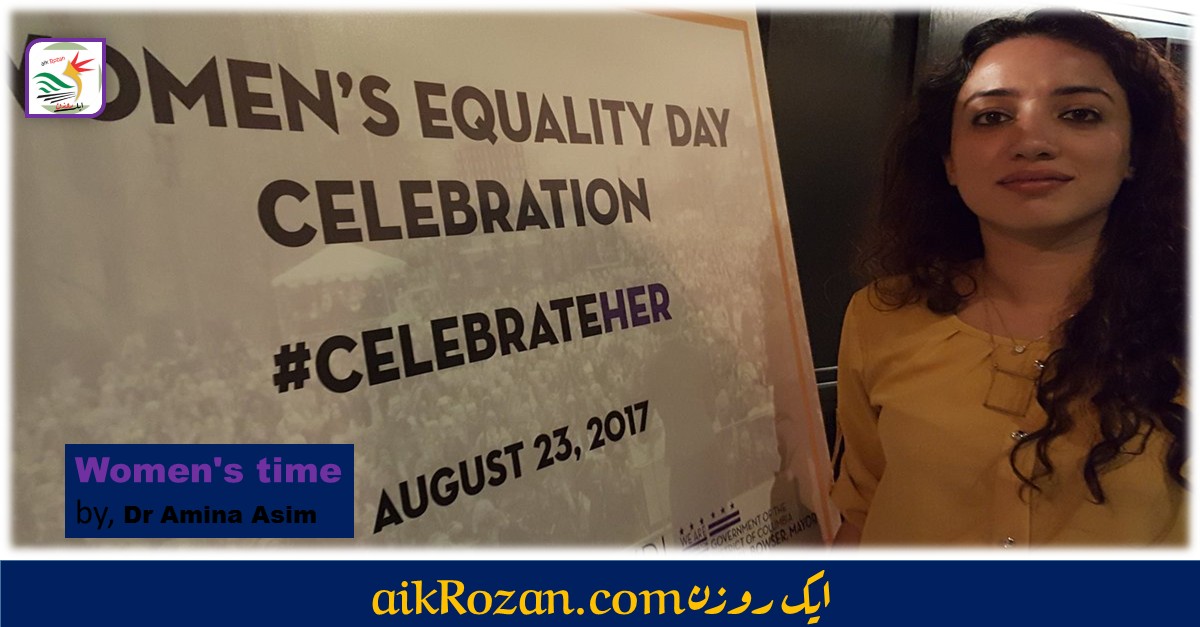
Women’s time
by, Dr Amina Asim
On a clear September evening in 2013, I took the train to the Gene Siskel Film Center in Downtown Chicago to watch a film by an up-and-coming female film-maker at the Turkish Film Festival. Like any Chicago evening at the precipice of Fall, the city’s schizophrenic wind was deeply immersed in a tug of war between an ingratiating warmth and a searing chill. It was a typical Friday evening, a steady stream of weathered locals and befuddled tourists in perpetual combat with layers of clothing noisily headed in all directions.
I spotted my Turkish friend and her companion in front of the film centre and as we went inside to get our tickets, I was aware of being eyed by a number of Turkish-looking youths attempting to decipher my nationality. The film we had come to watch, “Present Tense”, was the first feature-length film by film-maker Belmin Söylemez. My cursory reading of the description told me that the film was about a young woman living in Istanbul who reads people’s fortunes by looking at the residues in their coffee cups – a common practice in Turkey. As we settled into our strategically chosen seats and the room darkened, the film’s narrative remained true to its description, but the experience of the film time revealed much more.
The film begins with stills of scenes and objects in disrepair; an old vine covered wall, faded interiors, cracked windows, a stagnant apartment. With the same quietude, we are introduced to the 20-something protagonist Mina, as she silently sits at a coffee table by herself. The stillness with which she sips her coffee and looks out the window from inside her white-washed apartment, signals that the first few shots were the view through her eyes, and sets the tone for how we experience the rest of the film.
The personal experience of being a woman is further demonstrated when we follow Mina as she walks alone through Taksim, one of the central bazaars in Istanbul, in search of a job as a fortune-teller at a roadside café. The bustle of the streets of Istanbul remains outside of Mina in the solitude grounded in her subject throughout the film. Mina is hired on a trial basis, and we are introduced to two supporting characters: Ozun, the owner’s son, who is the involuntary manager of the café, and Tayfun, one of the other two fortune-tellers working at the café.
I was surprised to hear my Turkish friend express her disappointment over how “nothing happened” in the film. I, on the other hand, had been shaken into silence by how much had happened on the screen.
Mina’s inexperience as a fortune-teller comes across in an initial test by Tayfun and in her interaction with her first few customers. Her wish to go to America is revealed when we see the handful of dollars she has been saving up in a box hidden in her closet. Through the forced companionship and unwelcome curiosity of Tayfun and her troubled love life, we find out that Mina is recently divorced from her husband, the only long-term relationship she has ever had. It is also revealed that Mina’s apartment building is being commercialised and that she has been given a notice of eviction. When the new owners hire a male Super who watches her from outside her apartment and starts encroaching upon Mina’s private space, the motivation behind her need to escape the intrusive male gaze and go to America becomes urgent. We understand why she needs to break with her comfortable solace and enter an external time of public life.
See aslo: Generalizing versus stereotyping by, Dr Ishtiaq Ahmed
The revelation of Mina’s married past, of Tayfun’s string of failed relationships and a current abusive one, an amorphous romantic connection between Mina and Ozun, concomitantly unfolds along with Mina’s amateur readings of various women’s fortunes. The evolution of Mina and Tayfun’s complex friendship and the impotence of Ozun to help her either romantically or practically, are exposed as the main obstacles that thwart Mina’s revolutionary project undertaken in a patriarchal society. This is symbolised in the final two scenes as we watch Mina walking back to her apartment in a drunken stupor through an indiscriminate crowd of men and noise, stumbling and uncomprehending.
In the closing scene, Mina once again sits alone in her apartment at the coffee table, as she reads her own fortune in her coffee’s residue. She walks to the kitchen and drops her cup in a sink full of floating coffee cups – of fortunes – of women’s lives.
During the customary exchange of reactions to the film that occur at the end of any group-viewing cinematic experience, I was surprised to hear my Turkish friend express her disappointment over how “nothing happened” in the film. I, on the other hand, had been shaken into silence by how much had happened on the screen. I couldn’t help but wonder if my friend’s reaction stemmed from the fact that she had grown up as a woman in Istanbul and for her the experience of Mina’s everyday was a typical occurrence; while for me, stepping out of the building into a typical Friday night in Chicago was thoroughly disconcerting. Not only had I been a woman in Istanbul for the last 110 minutes, but everything and everyone on the street seemed to be moving in slow motion. Logically, I knew that the pace of downtown streets had not changed, but my experience of the film’s temporality had slowed down my perception of “reality” – I had been turned inward. And it took a consistent exposure to a schizophrenic gust of wind to finally allow me to return to Chicago.
I wondered if it was my re-reading of Beauvoir’s “The Second Sex” that had allowed me to interpret the film in which “nothing happens” as such a significant exposition of female subjectivity. But I was well aware of the fact that it was a Turkish woman’s subjectivity portrayed on screen, since it did not necessarily reflect my experience of being a woman from a “third world” patriarchal society.
It is in our experience of time – different, in each space, in each gender, in each function – that our everyday subjectivity comes across. How I experience time is different from how my Turkish or German friends do, and yet, we don’t speak of time in cultural terms – assuming that it is a cultural experience.
I could read the trajectory of Mina’s feminist revolt and see her visit to a “study abroad expo” as a similar event to what had formed part of my own experiences that landed me in Chicago; yet, I had no doubt that Mina and I were different; that we lived in distinct worlds; that her subjectivity differed from mine; that her experience of the social, the external, of alienation, was quite separate from mine. We were both women who lived in male-dominated Islamic countries, but our experiences of patriarchal structures, constructed from unique politico-historical processes had left a difference between us.
This experience of multiple temporality was not my first one. Having grown up in Pakistan, I experience a temporal disjoint every time I return home or come back to America after a relatively long stay. Sitting outside in the garden inside my parents’ house, the birds seem to flutter their wings in slow motion; while sitting on my couch inside my apartment in America, even on a lazy snowy afternoon, I am aware of the world outside frenetically passing by. When I watch Pakistani soaps with my mother, the narrative pace feels excruciatingly slow compared to the narrative pace of American TV shows that I religiously tune into here and there.
Growing up, my brother’s experience of everyday-ness differed even more categorically from mine. Where both of us were conveniently “colonially alienated” and thus grew up watching British and American cinema, and talking in hybrid English accents – he had much more freedom of movement than I did. He could walk around the streets at night; I couldn’t even do that during the day. He could comfortably lounge around in tiny bazaars overflowing with men; I had to think twice about the precise distance between the car and the shop I wanted to go to. He could visit his friends any time he wanted; I had to be back home by a certain hour. He would be berated if he spent too much time inside the house for being useless; I had to convince my parents if I wanted to do something besides. Needless to say, our experience of everyday-ness – of time – differed greatly. This lag shaped our perceptions of ourselves, of our consciousness, of our subjectivity, by defining our limitations and in turn, our experiences.
That our experiences of different spaces influence our identities is pretty well-studied, but it is in our experience of time – different, in each space, in each gender, in each function – that our everyday subjectivity comes across. How I experience time is different from how my Turkish or German friends do, and yet, we don’t speak of time in cultural terms – assuming that it is a cultural experience. Yet, what else is it but a social lag? A jet lag? A moment away? Could the experience of time influence our understanding of ourselves?
In Science and in Cinema, the experience of space cannot be separated from the experience of time. Space and its many elements cannot be understood without also understanding time – particularly for an object in motion. For instance, in Einstein’s theory of special relativity space and time are relative to one another – not independent – and time passes differently depending on the rate of motion of the observer or object. In Cinema too, space and time are indistinguishable – tiny units of time (frames) form the film’s narrative; even if we experience the film in a static room, it has the ability to transport us to different worlds, through the incessant motion of one frame after another, unfolding a narrative of another life.
Where the experience of travelling films (those playing at film festivals around the world) can influence our experience of self on the other side of the world, does my own travelling influence the other world that I enter? When I enter the Other’s space, does my temporality and in turn my subjectivity also alter with the speed at which I travel?
One way of keeping women subservient is to restrict their motion, and one way that women can revolt against temporal restrictions is by transgressing multiple boundaries, including the boundary of home.
Many women’s films, or films made by women have the quality of “nothing happens” – examples include Belgian filmmaker Chantal Akerman’s work, or films such as “Water” by Deepa Mehta, “Women Without Men” by Iranian-American filmmaker Shirin Neshat, or the exile narratives in Trinh T. Minh-ha’s work, among others. It is in the very essence of filmmaking that these women assert their identities as travelling, mobile, speaking subjects.
With the advent of private property and because of women’s biological function as the bearer of children, women have been confined to spaces within their homes, theoretically said to inhabit “cyclical time.” On the other hand, non-domestic or public time within which the man functions has been defined as linear or progressive time – headed toward a technologically charged immortal future. Simone de Beauvoir makes a similar argument, with an existential, and even biological view, of women as man’s essential-Other, relegated to repetitious stasis of inner household spaces. While men were part of the linear external temporality of Western History, which has been associated with progress and civilisation. But what remains constant is women’s identity in public space as being defined by the men in their lives.
And where much has been written in order to divest of such simplistic binary constructs, which suggest that women are stuck in a cyclical time of birthing and monthly weaning, women in many parts of the world – definitely in South Asia – are still largely confined to indoor spaces.
In fact, their external wanderings are marred by threatening occasions of male and patriarchal dominance. One way of keeping women subservient is to restrict their motion, and one way that women can revolt against temporal restrictions is by transgressing multiple boundaries, including the boundary of home. Women inhabit a completely different subjectivity than their male counterparts; they are brought up differently. Every boundary they cross is in the realm of the unknown, creating their own paths, always in opposition.
A woman who steps out, who steps across, cannot be static – she is propelled through time. There is no going back for the revolutionary woman. She enters a time that accumulates histories of subjugation, writes them, relives them, through storytelling, through actions, through speaking. It is the strength that can only come from women’s time of quietude, of deliberation – of the ability to step out of time, enter another’s and to disrupt it.
A woman stepping out of her house is itself a form of revolt – of transformation. In Pakistan, small groups of women defy their inner captivity and Girls at Dhabas or Girls on Motorbikes become symbols of feminist revolt. But what happens once you’re out on the streets? When you enter them? Does the man with the surgeon knife slashing women’s bodies on the streets of Karachi think he has a right to send them back inside? Does the serial killer who rapes 6-year old girls, strangling their bodies and throwing them on trash heaps, think he has a right? Because she stepped out onto his turf?
I wrote a book about the revolutionary time of women, marked by these transgressions, these mini-revolts, which when in tow with other women’s revolts create a kind of rhythm, a force. A voice that is heard, a time that is transformed. When you speak to older women living in the West, who are successful, and have grown up in this opposition to male time, they will tell you how #MeToo and #TimesUp are revolutions, not seen since the Seventies. Though women here are calling men out for assault and/or harassment that they thought was their right decades ago, many of these women will tell you that they did not know an alternative subjectivity or expectation from their female-selves was possible. They did not think they would see it in their own lifetime.
But there is a revolutionary temporality to women’s struggle and it is accentuated by the transnational moment, when we can see a woman in an isolated life in Istanbul, going through the same struggles, making the same transgressions, facing the same violence, as we do in Pakistan. When we see a superstar, a role model, a transcendental woman with timeless star power, recount her experience of assault, of aggression, of feeling trapped, of forcing herself to step out, to step across, and to challenge by speaking up – she is saying it is HER time, finally.
We must tell stories, so other women can hear them and experience them in other parts of the world. So they know that they are not in static time, but in a revolutionary temporality.
It is this experience of simultaneity in the film festival, in the carnival-esque gluttony of the internet, spilling over with glamorous bodies marked blue and black, that we see the female temporality, marred by its will to exceed. To want to break free from the realm of the static it has been assigned. It is a slow revolt. It is personal and quiet. But when it joins all the other tiny revolts happening in milliseconds across the world, it becomes revolutionary – and hopefully unstoppable.
And what happens to women like me, when we cross not only boundaries of our homes, but also cultural, historical and ideological boundaries, when we travel across continents in search of a value not found amongst our own? How does the Other’s time influence us? Or do I influence their time by entering it?
After many years living in Midwest America – explaining “why I spoke good English”, and trying to talk away awkward silences that arose the moment I told someone in the middle of an easily-flowing conversation that I was from Pakistan – did I remain static in this assigned role as ambassador of another culture? The culture of terrorists and repressed bodies, of horrid men with moustaches and colourful women with meek sounds. Did I tell them well enough that my father-with-a-moustache is a lovely man, who told me to be ambitious? How do I tell them that my sister with the coloured dress is a revolutionary poet?
Was that enough?
No, I think. It is in fact in the strength of my time, of my ability to be quiet, to think, to oppose the role assigned me, that I am able to create motion. I create motion in my time. And my time in the frenzied world of the do, do, do is what moves it, maybe not toward blind “progress” or progressive blindness – but rather, toward a moment of thought. Not to be confused with hesitation. Because a woman who steps out, who steps across, cannot be static – she is propelled through time. There is no going back for the revolutionary woman. She enters a time that accumulates histories of subjugation, writes them, relives them, through storytelling, through actions, through speaking. It is the strength that can only come from women’s time of quietude, of deliberation – of the ability to step out of time, enter another’s and to disrupt it.
That is why it is so important to tell these women’s stories, through film, through books, through blogs or tweets as we might have it. We must tell stories, so other women can hear them and experience them in other parts of the world. So they know that they are not in static time, but in a revolutionary temporality. It is not a moment they are a part of, it is a movement, which has its own time. It is historical and it has been going on for a long time. It’s just that now that we are able to see that it is a permanent revolution and it is every woman’s transgression and it is contemporaneous – we must be part of it in order to transform our time.
A lot happens when we think nothing is happening.
Dr. Amina Asim is a reportage editor at Papercuts. She is a digital media consultant who lives in Washington, DC. Her award-winning dissertation Tonguing Time: Transnational Feminism, Film and Festival explores the idea of the revolutionary woman and the time within which she functions and is represented in much detail. She is also producing a documentary film on China and Pakistan’s relationship and spends most of her time making strategy and content for the American government.
This article has been taken from Papercuts Vol. 19




